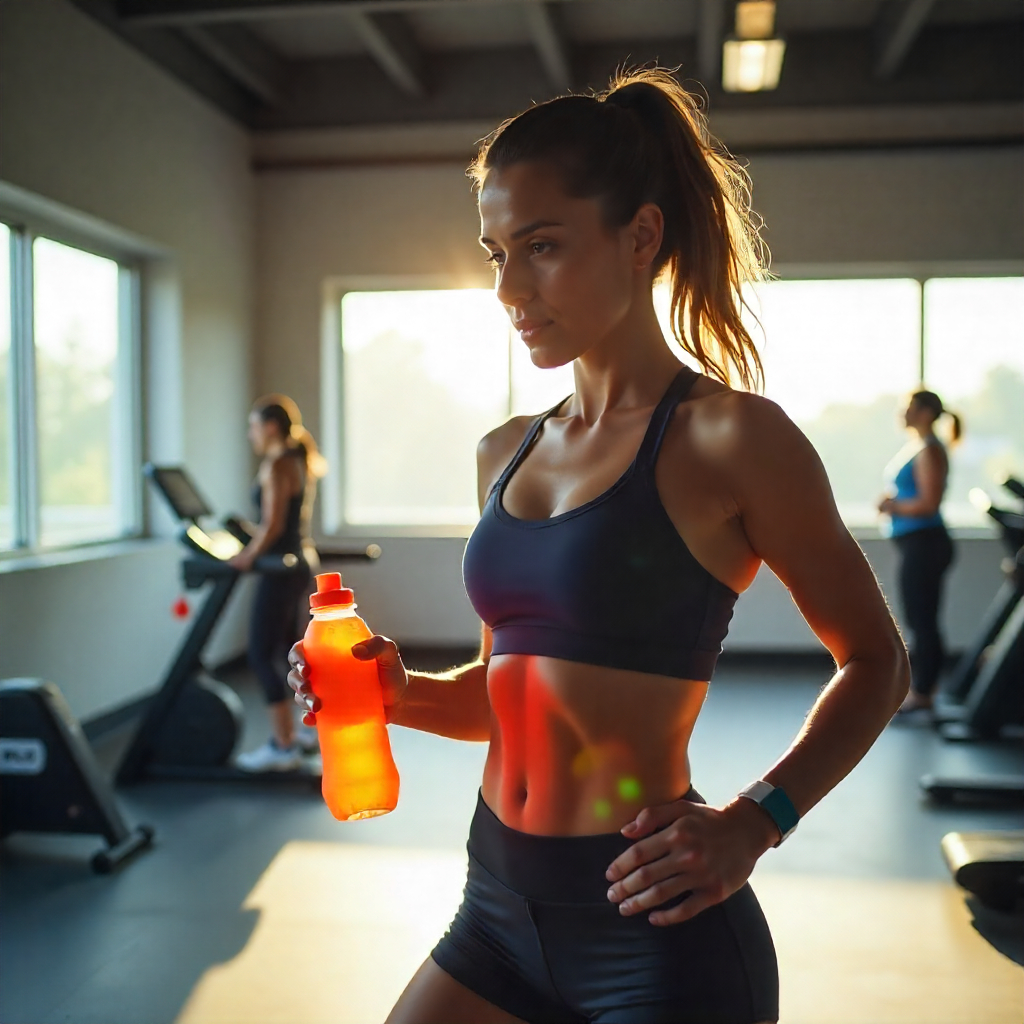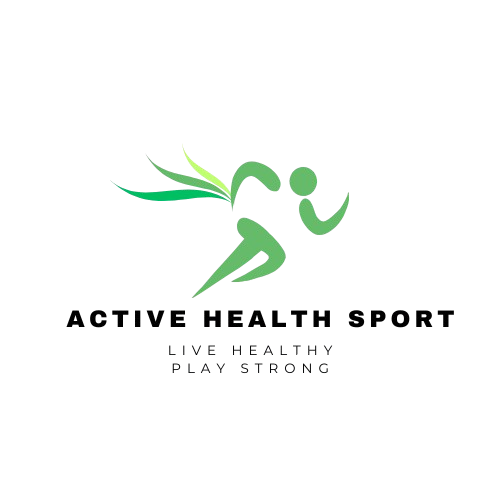Stretching is often seen as a quick prelude to exercise or an afterthought at the end of a workout. But did you know its benefits extend far beyond warming up?
Stretching improves flexibility and plays a vital role in injury prevention, mental relaxation, and even overall well-being. In this blog, we will explore the benefits of stretching and why it deserves a dedicated spot in your daily routine. Let’s stay with us!
What Is Stretching?
Stretching is the deliberate act of elongating muscles and tendons to enhance flexibility, improve range of motion, and support overall muscle tone. It serves as a foundation for maintaining mobility and reducing the risk of injury. Various stretching techniques cater to different needs and goals, making it a versatile practice suitable for anyone.
Static stretching involves holding a specific position for an extended period, gently lengthening the targeted muscle. On the other hand, dynamic stretching incorporates controlled, active movements to prepare muscles for physical activity, making it ideal before workouts or sports. A more advanced method, PNF stretching (Proprioceptive Neuromuscular Facilitation), combines muscle contraction and relaxation to maximize stretch intensity and range.
Each type of stretching offers unique benefits, whether you’re aiming to loosen tight muscles, enhance athletic performance, or simply improve posture. Understanding these techniques allows you to craft a stretching routine tailored to your specific goals, ensuring you reap the full benefits of this simple yet powerful practice.
The Science Behind Stretching
Stretching does more than just prepare the body for movement; it creates profound physiological changes that benefit both physical and mental health. At its core, stretching impacts the body in the following ways:
1. Enhances Flexibility
Regular stretching improves the elasticity of muscles and connective tissues such as tendons and ligaments. Over time, this helps prevent stiffness and reduces the risk of injuries, especially during physical activities.
2. Increases Blood Flow
When you stretch, blood vessels expand, boosting circulation to the stretched area. This enhanced blood flow delivers more oxygen and essential nutrients to the muscles, facilitating quicker recovery after exercise and reducing muscle soreness.
3. Relieves Muscle Tension
Stretching elongates tight and contracted muscles, alleviating discomfort and promoting relaxation. It’s particularly beneficial for individuals who sit for extended periods or experience tension from repetitive motions. By releasing knots and easing stiffness, stretching improves posture and reduces pain.
4. Activates the Parasympathetic Nervous System
Deep, controlled breathing often accompanies stretching. This practice stimulates the parasympathetic nervous system, which counteracts the “fight or flight” response, promoting relaxation and mental calmness. Stretching becomes not just a physical exercise but a meditative practice, enhancing overall well-being.
The Physical Benefits of Stretching
Stretching isn’t just a supplementary activity, it’s a vital component of maintaining and improving physical health. Here’s how it benefits the body:

1. Improves Flexibility and Range of Motion
Stretching helps your joints move through their full range of motion, reducing stiffness and supporting better mobility. Whether you’re an athlete aiming for peak performance or simply want to move comfortably in daily life, improved flexibility can significantly enhance physical efficiency. This benefit is especially important as you age since regular stretching counteracts natural declines in flexibility, keeping movements smooth and pain-free.
2. Reduces the Risk of Injuries
Flexible muscles are more adaptable to sudden movements or strains, which significantly lowers the risk of injuries like sprains, tears, or joint issues. Pre-workout dynamic stretches activate and warm up the muscles, preparing them for exertion.
3. Eases Muscle Soreness
After intense workouts, muscles often feel tight and sore due to the buildup of lactic acid and minor tears in muscle fibers. Static stretching post-exercise enhances blood flow to the affected areas, speeding up recovery and reducing delayed onset muscle soreness (DOMS).
4. Boosts Athletic Performance
Dynamic stretching before exercise optimally prepares your muscles for intense activity. Stretching also improves coordination, ensuring that movements are smooth and efficient during athletic performance.
Incorporating regular stretching into your routine creates a foundation for better movement, injury prevention, and overall physical well-being, no matter your activity level.
The Mental Benefits of Stretching
Stretching is not just a physical practice; it’s deeply connected to mental well-being, offering several psychological advantages that can enhance your daily life.
When you stretch, it releases physical tension stored in muscles, which has a direct calming effect on the mind. This is especially true for areas like the shoulders, neck, and lower back, which are prone to holding stress. Pairing stretching with deep, mindful breathing amplifies the relaxation response by activating the parasympathetic nervous system, your body’s “rest and digest” mode. It’s a simple yet powerful way to feel more at ease in moments of overwhelm.
Also Read: Dynamic vs Static Stretching | Which Fits Your Fitness Goals?
Chronic stress often manifests physically as tightness or discomfort in the body, particularly in the upper back, neck, and hips. Regular stretching targets these tension hotspots, fostering a sense of relief and release.
Stretching before bedtime can have a profound impact on sleep. Gentle, calming stretches help relax the body, reduce muscle stiffness, and ease the mind into a state of restfulness. Over time, incorporating stretching into your evening routine can help regulate your sleep cycle, improving overall energy and mood.
The mental benefits of stretching are just as vital as the physical ones, making it an effective tool for overall wellness.
Stretching for Different Needs
1. For Office Workers
Spending hours at a desk can lead to stiffness in the neck, shoulders, and back. Incorporate stretches like neck rolls, shoulder shrugs, and seated spinal twists to counteract these effects.
2. For Athletes
Athletes benefit from dynamic stretches before activity to boost performance and static stretches afterward to aid recovery.
3. For Seniors
Stretching improves balance, flexibility, and mobility, helping older adults maintain independence and prevent falls.
How to Incorporate Stretching into Your Routine
- Start Slow
Begin with simple, static stretches that you can hold comfortably for 15-30 seconds. This helps you gauge your current flexibility level without overexerting yourself. Remember, it’s about gradual improvement, not instant results. - Focus on Major Muscle Groups
Pay attention to areas of the body that are prone to stiffness, such as the hamstrings, hip flexors, shoulders, and lower back. Stretching these key muscle groups helps alleviate common discomforts and improves your overall range of motion. - Consistency Is Key
Make stretching a daily habit, even if it’s just for 10 minutes. You can weave it into your routine as part of your morning wake-up, post-workout cooldown, or pre-bedtime relaxation. The benefits compound with time, so stick with it. - Listen to Your Body
Stretching should feel like a gentle release, not a strain. Avoid forcing your body into positions that cause pain or discomfort, as overstretching can lead to injuries. Breathe deeply and stay aware of how your body responds.

What Are The Common Myths About Stretching?
Stretching is surrounded by misconceptions that often discourage people from including it in their routines. Let’s address these myths and uncover the truth about its benefits:
Myth 1: Stretching Isn’t Necessary for Non-Athletes
Fact: Stretching isn’t just for athletes or fitness enthusiasts. Whether you’re sedentary or highly active, regular stretching helps maintain mobility, prevents stiffness, and reduces muscle tension caused by prolonged sitting or repetitive tasks. It’s a simple yet effective way to enhance everyday comfort and well-being.
Myth 2: Stretching Is Only Beneficial Before Exercise
Fact: While pre-exercise dynamic stretching can help prepare your muscles for activity, post-exercise static stretching is equally important to reduce muscle soreness and improve recovery. Stretching also works as a standalone activity to relieve stress, improve posture, and increase flexibility at any time of day.
Myth 3: Flexibility Is Only for the Young
Fact: Flexibility is achievable at any age with consistent practice. Regular stretching can help older adults improve their range of motion, reduce joint pain, and maintain an active lifestyle. It’s never too late to start, and the benefits extend well into later years.
🧘♂️ Real Stretching Stories: How Simple Routines Unlocked Unexpected Life Benefits
Stretching is a quiet revolution happening in bedrooms, offices, and living rooms across the country. At Active Health Sport, we’ve collected three incredible real-life stories from Americans who unlocked surprising benefits by embracing daily stretching routines. Their journeys show how this underrated practice can deeply impact your health and mindset.
🤸♀️ Queen Alaster – Finding Relief from Chronic Desk Pain
Age: 41
Location: Seattle, Washington
Queen Alaster, a software project manager, used to deal with constant neck stiffness and lower back pain from sitting long hours. She tried ergonomic chairs, standing desks, even massage therapy, but nothing lasted.
After reading an article on Active Health Sport about daily mobility stretches, she decided to follow a 10-minute morning and evening stretch plan. Her routine focused on:
✅ Neck rotations and shoulder rolls
✅ Hip flexor and lower back stretches
✅ Gentle hamstring extensions
Within four weeks, Queen noticed less tension and better posture. The biggest surprise? Improved focus at work and fewer afternoon energy crashes.
“Stretching helped my body—and my brain. I didn’t realize how tight muscles were slowing me down until I loosened up.” – Queen Alaster
🧍♀️ Kaitt Kaira – Boosting Flexibility and Self-Confidence
Age: 34
Location: Orlando, Florida
Kaitt Kaira, a former college volleyball player, felt stiff and sluggish as her active lifestyle dwindled. While she wanted to get back into shape, high-impact workouts felt too overwhelming. A friend suggested she begin with dynamic stretching to ease back into movement.
Kaitt committed to a simple morning stretch flow from Active Health Sport, including:
✅ Dynamic leg swings
✅ Arm circles and spine twists
✅ Deep breathing with full-body stretches
Over two months, Kaitt regained flexibility, reduced her anxiety, and even felt more confident in social settings thanks to better posture and body awareness.
“Stretching gave me a sense of control over my body again—it’s been the most empowering part of my fitness journey.” – Kaitt Kaira
🩺 Dr. Davas – Recommending Stretching as Preventive Health
Age: 52
Location: Cleveland, Ohio
Dr. Davas, a general practitioner with over two decades of clinical experience, noticed a pattern in his aging patients: tight muscles were contributing to falls, poor circulation, and mobility loss. He decided to put stretching to the test, starting with himself.
By implementing a 15-minute evening stretch routine based on Active Health Sport’s guides, he experienced:
✅ Reduced joint pain in his knees
✅ Better sleep quality
✅ A calmer, more reflective evening wind-down
He now includes daily stretching recommendations in his patient wellness plans, and says it’s one of the most underutilized forms of preventive health.
“Stretching should be prescribed. It’s gentle, powerful, and life-enhancing.” – Dr. Davas
These stories reflect a powerful truth: stretching is about showing up for your body and mind. Whether you’re managing pain, reclaiming flexibility, or improving your focus, daily stretching can be a life-changer.Start small. Stay consistent. Let Active Health Sport guide your journey to a stronger, more mobile you. 💪🧘♀️
Stretching Trends to Watch in 2025
As we move into 2025, stretching is evolving beyond simple pre and post-workout routines into a lifestyle movement supported by innovation and awareness. One emerging trend is dedicated stretching studios, where professional instructors guide individuals through customized stretching sessions. These studios cater to diverse needs, whether improving athletic performance, enhancing flexibility, or aiding recovery from injuries.
Wearable stretching monitors are also gaining traction. These devices track flexibility, posture, and muscle engagement, providing real-time feedback to ensure optimal stretching practices. They are particularly useful for athletes, physical therapy patients, and fitness enthusiasts looking to refine their techniques.
Additionally, workplaces are recognizing the importance of flexibility and movement for employee health. Integrated stretching programs during the workday, such as guided breaks or virtual stretching sessions, are becoming standard practices in companies prioritizing wellness. These initiatives aim to combat the physical toll of prolonged sitting and improve productivity and morale.
These trends reflect a growing appreciation for stretching as an essential element of health and well-being, blending traditional practices with modern innovations to make it accessible and effective for everyone.
Final Thoughts | Stretch Your Way to Better Health
Stretching is far more than a pre-exercise ritual, it’s a powerful tool for enhancing your physical, mental, and emotional well-being. Whether your goal is to improve flexibility, prevent injuries, reduce stress, or simply add a moment of mindfulness to your day, stretching can transform your health in subtle yet significant ways.
Start small by incorporating a few stretches into your morning or evening routine. With consistency, you’ll not only see improvements in your physical health but also feel the mental clarity and relaxation that comes with it.
Stretching is simple, accessible, and incredibly effective proof that sometimes the smallest habits can yield the biggest results. Embrace the power of stretching and unlock a healthier, more flexible you in 2025 and beyond.
That’s all from today folks! If you have any questions or feedback, feel free to share them in the comments below or reach out to us directly. We’re here to support you and would love to hear your thoughts.
You might also like….
- Why a Digital Detox Before Bed Can Fix Your Sleep Faster
 The Modern Sleep Thief Hiding in Your Hand In a world where we check our phones hundreds of times a day, it’s no surprise our sleep has taken… Read more: Why a Digital Detox Before Bed Can Fix Your Sleep Faster
The Modern Sleep Thief Hiding in Your Hand In a world where we check our phones hundreds of times a day, it’s no surprise our sleep has taken… Read more: Why a Digital Detox Before Bed Can Fix Your Sleep Faster - How to Align Your Circadian Rhythm for All-Day Energy Gains
 Why You Feel Tired Even After Sleeping Enough Have you ever slept for eight hours and still felt groggy the next morning?The issue might not be how long… Read more: How to Align Your Circadian Rhythm for All-Day Energy Gains
Why You Feel Tired Even After Sleeping Enough Have you ever slept for eight hours and still felt groggy the next morning?The issue might not be how long… Read more: How to Align Your Circadian Rhythm for All-Day Energy Gains - Electrolytes vs. Water: What Active Adults Must Know
 Beyond Water, The Hidden Key to True Hydration Most adults know the rule, “Drink more water.”But few realize that hydration isn’t just about fluid intake. It’s about electrolyte… Read more: Electrolytes vs. Water: What Active Adults Must Know
Beyond Water, The Hidden Key to True Hydration Most adults know the rule, “Drink more water.”But few realize that hydration isn’t just about fluid intake. It’s about electrolyte… Read more: Electrolytes vs. Water: What Active Adults Must Know

Kait Amazra is the founder and lead writer of Active Health Sport. With over 25 years of experience in health, fitness, and wellness education, Kait combines professional expertise with a passion for helping people live stronger, healthier, and more balanced lives.
As a licensed health and fitness professional, Kait has worked alongside industry experts to deliver evidence-based insights on physical activity, nutrition, recovery, and holistic well-being. Through Active Health Sport, Kait’s mission is to make trusted, practical, and science-backed health information accessible to everyone, from beginners building new habits to athletes seeking peak performance.


Thanks for sharing. I read many of your blog posts, cool, your blog is very good.
Thank You! Stay with us for more amazing content!